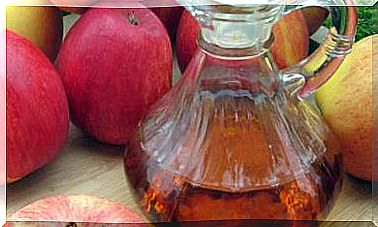The Art Of Eating Without Haste
Enjoying meals in a conscious way brings us great physical and emotional benefits. Let’s stop rushing and focus on good food.

Much of the time of the family gatherings typical of these parties revolves around the table and the meals specially prepared for these events.
We get together for Christmas Eve dinner, Christmas lunch, to celebrate the New Year, the Three Kings snack, etc. These moments are experienced with special anxiety by people who have a problematic relationship with food.
Furthermore, if these disorders are originally connected with the type of family relationships experienced in childhood, the tension around the table and the food experienced by these individuals multiplies exponentially.
When eating is a formality
The stress of our society is clearly reflected in the way we eat our food.
We eat fast and badly, limiting ourselves, on many occasions, to gobbling up a fast food menu in less than twenty minutes so that we can return to work as soon as possible.
Today, in which multi-functionality is socially promoted, many people do not have time to stop and enjoy the colors, smells, tastes, tastes and textures of food.
For a great majority, the feeling is that the time they dedicate to eating is wasted time that has to be completed, so as not to have the feeling that they have wasted it, with other activities.
Thus, frequently, in many homes and restaurants, we can observe men, women and children who eat mechanically while their attention is completely focused on their smartphone or tablet.
The culture of distraction, it is increasingly difficult for us to focus on a single task, and speed, prevents us from enjoying food as before and this, which is not a harmless change of habits, can even lead to emotional problems and physical.
Chewing and salivation time is essential for healthy digestion. Eating fast pushes us to skip this much-needed step and, in the long run, our digestive system can be affected by this gobbling up food without spending enough time on it.
Also, this extreme speed prevents us from enjoying food, concentrating on its richness and receiving the nutritional, emotional and sensitive benefits that healthy foods eaten in a conscious way give us.
In their childhood, many people did not have a healthy and patient learning around food. At an early age, they learned to eat in a hurry and, as adults, spend very little time on their meals.
These individuals even take pride in how quickly they can eat and mock those who take the longest to finish their dishes.
How we learn to devour
Margarita, on the recommendation of her family doctor, came to my office. The young woman suffered from stomach problems, for which she was already being treated, but the doctor had advised her to lower her stress level, since this was aggravating her problem.
Certainly, Margarita was a woman stressed by her work who recognized that, rather than eating, she devoured food without paying the slightest attention to it.
In therapy, we began to work so that, leaving aside other distractors, she could focus on the food, but the young woman had a hard time focusing, she always tended to speed up.
In one of the sessions, Margarita recalled a scene from her childhood, common at meal times.
In her family, she was the youngest of five siblings, when it was time for lunch or dinner, the custom was that, once they were all seated, her mother would place a tray, a platter or, directly, in the center of the table. a pot with all the food, so that each one could serve their own portion.
Once the pot or tray was deposited, Margarita’s older brothers rushed to serve themselves and she had to find a space to be able to get some food. Also, when one of them finished their part, the plate would be refilled, and so on, over and over again, until the container was empty.
As you can imagine, little Margarita learned that, if she wanted to satisfy all her hunger, she had to hurry so as not to be the last to finish and be in time to help herself to a new portion.
Day by day, throughout her childhood , the time of lunch or dinner became for Margarita a situation of maximum stress in which, whoever ate the fastest, could repeat and satisfy her hunger.
Relearning to eat without haste
Coinciding with her therapy, Margarita noticed that her young son, who was 5 years old at the time, was eating in a calm and calm way.
He hadn’t learned to eat under stress and he had no siblings with whom he had to compete for food. Margarita watched him in amazement and wished she could enjoy food as her son did, savoring it in a serene and pleasant way.
Her son’s model made the young woman understand that it was no longer necessary to eat in a hurry.
Margarita was able to leave her stress pattern behind when she assimilated the idea that in the present, an adult and independent woman, she did not have to fight or accelerate to be able to eat.
Observing her son, she began to pay more attention to food, colors, textures, tastes and smells. For the first time in his life, he told me in consultation, he was enjoying what he ate: “I no longer fill my stomach without more, but I am aware that I am eating,” he said.
This calm spirit is what we have to bring into our lives and our relationship with food.
Let’s stop to enjoy each of our actions and movements, observing each food, its peculiarities, its details and leaving distractions aside.









